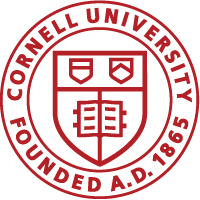Innovative Approaches to the Use of Mesenchymal Stromal Cells for Degenerative Orthopedic Disease and Cutaneous Wounds
Mesenchymal stromal cells (MSCs) are adult, multipotent progenitor cells that show promise as a therapeutic for a variety of human and veterinary diseases alike. Clinical implementation of MSCs or MSC-derived therapeutics is hindered by a limited understanding of their mechanism(s) of action. Mitochondrial transfer from MSCs to other cell types and antibacterial secreted products from MSCs are two relatively understudied mechanisms that may contribute to beneficial clinical outcomes, particularly in the context of degenerative orthopedic disease and cutaneous wounds, respectively.
In the first chapter, I provide a comprehensive overview of (i) mitochondrial transfer from MSCs, which is whole organelle donation of mitochondria from MSCs to recipient cell types and (ii) secreted products of MSCs, collectively referred to as the ‘secretome’ and their ability to inhibit bacterial growth.
Chapter Two is a published report of mitochondrial transfer from MSCs to chondrocytes, the cells of cartilage. Mitochondrial dysfunction in chondrocytes contributes to the degeneration of articular cartilage and thus, osteoarthritis (OA). We describe several in vitro and ex vivo models of OA caused by mitochondrial, mechanical, and environmental stress and show that MSCs respond by donating mitochondria to the stressed chondrocytes. Chapter Three attempts to establish a chemically-induced model of mitochondrial dysfunction in intervertebral disc cells, which, like chondrocytes, are known to experience mitochondrial dysfunction in the pathogenesis of degenerative disc disease (DDD).
Chapter Four is also a published report, describing a novel in vivo model of equine cutaneous wounds infected with Methicillin-resistant Staphylococcus aureus (MRSA) to explore the efficacy of MSC secretome as a treatment. Several areas for improvement were identified in this in vivo model and the objectives of Chapter Five were to investigate those areas in more depth. Firstly, we acquired a new tissue source of equine MSCs, namely dental pulp (DP), and then compared the anti-MRSA potential of their secretome to the secretomes collected from adipose tissue (AT)-, bone marrow (BM)-, and peripheral blood (PB)-MSCs. Our salient findings were that the BM-MSC secretome can inhibit MRSA isolated from humans; however, the secretome from all four tissue sources inhibited MRSA isolated from an equine wound to a greater degree than human MRSA isolates.
The work described within this dissertation furthers our understanding of novel approaches to the use of MSCs for the treatment of OA, DDD, and cutaneous wounds.
Fahey M, Bennett M, Thomas M, Montney K, Vivancos-Koopman I, Pugliese B, Browning L, Bonassar LJ, Delco M. Mesenchymal stromal cells donate mitochondria to articular chondrocytes exposed to mitochondrial, environmental, and mechanical stress. Sci Rep. 2022 Dec 13;12(1):21525. doi: 10.1038/s41598-022-25844-5. PMID: 36513773; PMCID: PMC9747781.



